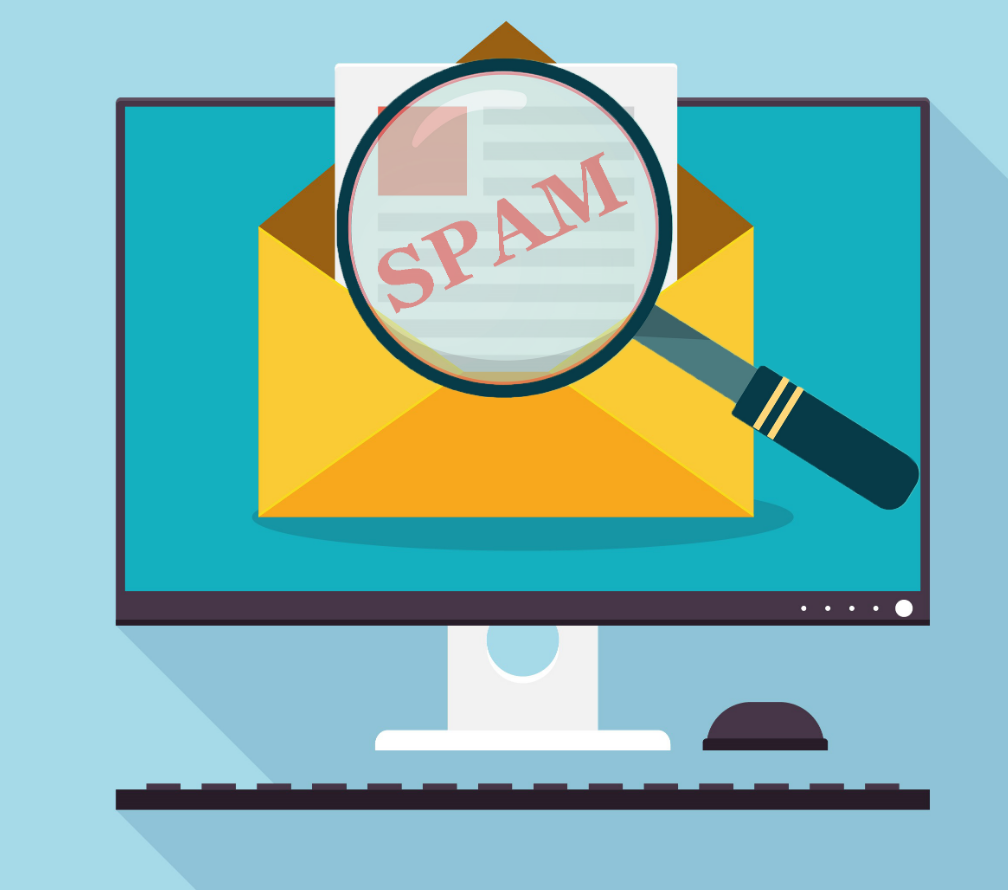 Blog's Page
Blog's Page

Spam Is Unwanted Or Unsolicited Email. It Is Typically Sent In Bulk To A Large Number Of Email Addresses, Often Without The Recipient's Permission. Spam Mail Often Contains Advertisements For Products Or Services, But Can Also Contain Phishing Scams, malware, Or Other Harmful Content. Spam Mail Can Be A Nuisance, Consume Valuable Time And Resources, And Can Also Be A Security Risk If The Recipient Clicks On A Malicious Link Or Attachment. To Combat Spam, Most Email Providers Have Filters That Attempt To Identify And Automatically Block Or Mark As Spam Any Incoming Messages That Match Certain Characteristics Commonly Associated With Spam.
There Are Several Types Of Spam Email, Including:
Advertising Spam: This Type Of Spam Promotes A Product Or Service, And Often Contains Hyperlinks Or Attachments That Lead To A Website Or Landing Page.
Phishing Spam: This Type Of Spam Aims To Trick The Recipient Into Revealing Sensitive Information, Such As Passwords Or Credit Card Numbers, By Pretending To Be From A Legitimate Source.
Malware Spam: This Type Of Spam Contains Links Or Attachments That Contain Malware, Which Can Harm The Recipient's Computer Or Steal Sensitive Information.
Investment Spam: This Type Of Spam Promotes Investment Opportunities That Are Often Fraudulent Or Risky.
Nigerian Letter Or "419" Spam: This Type Of Spam Promises A Large Sum Of Money In Exchange For A Small Fee Or For Helping To Transfer Funds.
Work-at-Home Spam: This Type Of Spam Promotes Work-at-home Opportunities That Are Often Scams.
Pornographic Spam: This Type Of Spam Contains Sexually Explicit Content.
Charity Spam: This Type Of Spam Requests A Donation For A Charitable Cause, Often With A False Or Misleading Story.
These Are Some Of The Most Common Types Of Spam, But There Are Many Others. Regardless Of The Type, Spam Is Generally Considered A Nuisance And Can Also Pose A Security Risk. It's Important To Be Cautious When Opening Emails From Unknown Senders Or Responding To Unsolicited Email.
The Full Form Of SPAM Mail Is: "Stupid, Pointless, Annoying Messages." This Term Is A Play On The Word "spam" From A Monty Python Skit, Which Referred To An Excessive Amount Of Unwanted Food Items, Particularly Canned Meat. The Term Was Later Adopted To Describe Unwanted Email. In This Context, The Full Form Of SPAM Mail Is Not An Official Or Standardized Definition, But Is A Humorous Take On The Nature Of Unwanted Email.
Spam Mail Can Be Harmful In Several Ways:
Time Waste: Spam Can Consume Valuable Time And Resources As It Must Be Sorted And Deleted, Which Can Be Time-consuming And Distracting.
Phishing And Scams: Spam Can Contain Phishing Scams That Trick The Recipient Into Revealing Sensitive Information, Such As Passwords Or Credit Card Numbers.
Malware: Spam Can Contain Links Or Attachments That Contain Malware, Which Can Harm The Recipient's Computer Or Steal Sensitive Information.
Server Overload: Large Amounts Of Spam Can Cause Servers To Become Overwhelmed, Slowing Down Email Services And Other Critical Functions.
Reputation Damage: If A Person's Email Address Is Associated With Spam, It Can Damage Their Reputation And Make It More Difficult For Them To Send And Receive Legitimate Email.
Data Loss: Spam Can Contain Viruses Or Other Malicious Software That Can Infect A Person's Computer And Cause Data Loss.
Increased Costs: The Cost Of Filtering, Blocking, And Managing Spam Can Add Up And Become A Significant Expense For Organizations And Individuals.
It's Important To Be Cautious When Opening Emails From Unknown Senders Or Responding To Unsolicited Email, And To Use Anti-spam Tools And Practices To Help Protect Against Spam.
There Are Several Steps You Can Take To Reduce The Amount Of Spam You Receive:
Use A Spam Filter: Most Email Services Have Built-in Spam Filters That Can Help Identify And Move Spam Messages To A Separate Folder.
Be Careful What You Sign Up For: Be Cautious When Providing Your Email Address To Websites Or Online Services, And Only Provide It To Sources That You Trust.
Don't Respond To Spam: Responding To Spam Only Confirms To The Sender That Your Email Address Is Active, Which Can Result In More Spam.
Use A Secondary Email Address: Consider Using A Secondary Email Address For Online Purchases Or When Signing Up For Websites And Services, To Help Separate Your Personal And Spam Email.
Use Disposable Email Addresses: If You Need To Provide An Email Address For A Temporary Purpose, Consider Using A Disposable Email Address.
Report Spam: Report Spam To Your Email Provider Or The Sender's Internet Service Provider (ISP) So They Can Take Appropriate Action.
Keep Software Up-to-Date: Keep Your Operating System And Anti-virus Software Up-to-date To Help Protect Against Malware And Other Security Threats That Can Be Delivered Through Spam Email.
By Following These Steps, You Can Reduce The Amount Of Spam You Receive And Help Protect Your Personal And Sensitive Information From Phishing And Other Scams.